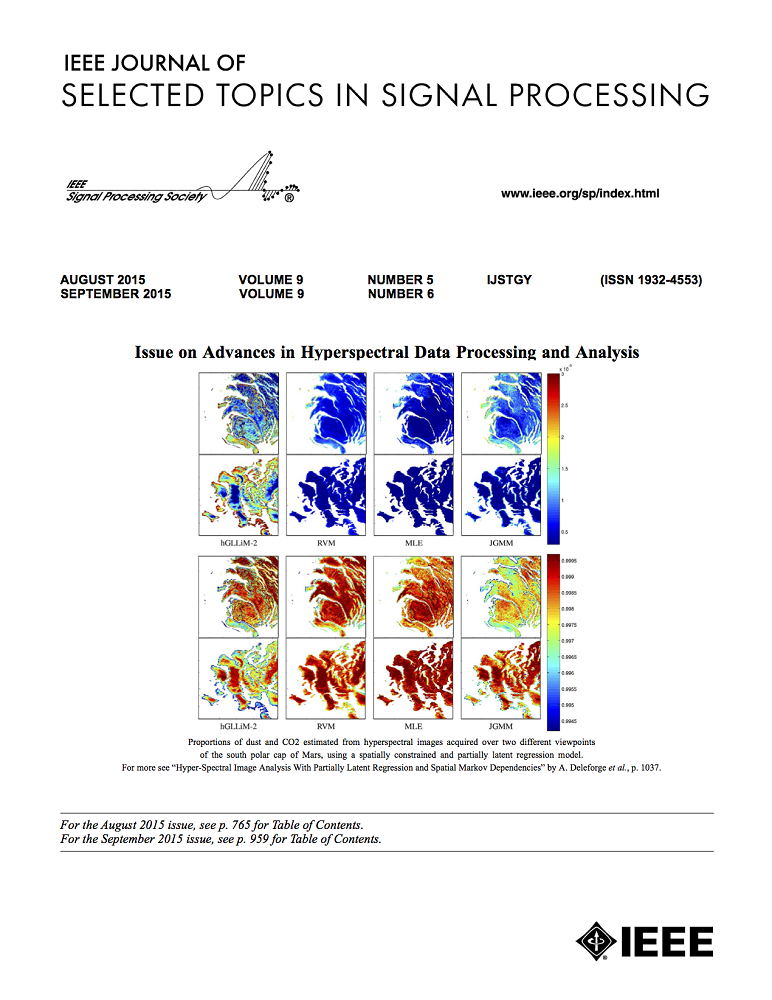Adapt and Aggregate: Adaptive OFDM Numerology and Carrier Aggregation for High Data Rate Terahertz Communications
IF 8.7
1区 工程技术
Q1 ENGINEERING, ELECTRICAL & ELECTRONIC
IEEE Journal of Selected Topics in Signal Processing
Pub Date : 2023-06-13
DOI:10.1109/JSTSP.2023.3285448
引用次数: 1
Abstract
We propose a communication framework suitable for data rate maximization in the Terahertz (THz) bands using adaptive Orthogonal Frequency Division Multiplexing (OFDM) numerology and carrier aggregation. OFDM is a widely adopted waveform due to the simplicity of its implementation and its effectiveness in combating frequency selectivity when the numerology is carefully chosen. However, it suffers from a multitude of limitations, including phase noise due to local oscillator inaccuracies, high peak-to-average power ratio, and is particularly sensitive to time-frequency synchronization errors, which can considerably impact its performance. This is especially relevant at THz frequencies where larger-than-usual bandwidth is available, and the choice of the numerology should be carefully made given the intrinsic transceiver constraints. Moreover, the abundance of frequency resources in the THz band imposes new design challenges that should be addressed, especially since the bandwidth usability at these frequencies depends on the communication distance. Hence, we propose a dynamic OFDM numerology adaptation mechanism, where the bandwidth of a Component Carrier (CC) covered by a single OFDM waveform is changed. For each CC, the Component Carrier Data Rate (CCDR) is evaluated while considering the effect of both hardware impairments and the wireless channel statistics. We further propose the adoption of a dynamic distance-aware CC allocation such that the available frequency resources are fully utilized, and maximize an Aggregated Data Rate (ADR) through the aggregation of several CCs. Simulation results show that the proposed approach yields the highest ADR out of all possible setups.自适应和聚合:用于高数据速率太赫兹通信的自适应OFDM数字和载波聚合
我们使用自适应正交频分复用(OFDM)数字技术和载波聚合,提出了一种适用于太赫兹(THz)频带中数据速率最大化的通信框架。OFDM是一种被广泛采用的波形,这是由于其实现的简单性以及在仔细选择数字时在对抗频率选择性方面的有效性。然而,它受到许多限制,包括由于本地振荡器不准确而产生的相位噪声、高峰均功率比,并且对时间-频率同步误差特别敏感,这可能会极大地影响其性能。这在THz频率下尤其重要,因为THz频率具有比通常更大的带宽,并且在考虑到固有的收发器约束的情况下,应该仔细选择命理学。此外,太赫兹频带中丰富的频率资源带来了新的设计挑战,应该加以解决,特别是因为这些频率下的带宽可用性取决于通信距离。因此,我们提出了一种动态OFDM数字自适应机制,其中单个OFDM波形覆盖的分量载波(CC)的带宽发生变化。对于每个CC,在考虑硬件损伤和无线信道统计的影响的同时,评估分量载波数据速率(CCDR)。我们进一步建议采用动态距离感知CC分配,以便充分利用可用频率资源,并通过聚合多个CC来最大化聚合数据速率(ADR)。仿真结果表明,在所有可能的设置中,所提出的方法产生了最高的ADR。
本文章由计算机程序翻译,如有差异,请以英文原文为准。
求助全文
约1分钟内获得全文
求助全文
来源期刊

IEEE Journal of Selected Topics in Signal Processing
工程技术-工程:电子与电气
CiteScore
19.00
自引率
1.30%
发文量
135
审稿时长
3 months
期刊介绍:
The IEEE Journal of Selected Topics in Signal Processing (JSTSP) focuses on the Field of Interest of the IEEE Signal Processing Society, which encompasses the theory and application of various signal processing techniques. These techniques include filtering, coding, transmitting, estimating, detecting, analyzing, recognizing, synthesizing, recording, and reproducing signals using digital or analog devices. The term "signal" covers a wide range of data types, including audio, video, speech, image, communication, geophysical, sonar, radar, medical, musical, and others.
The journal format allows for in-depth exploration of signal processing topics, enabling the Society to cover both established and emerging areas. This includes interdisciplinary fields such as biomedical engineering and language processing, as well as areas not traditionally associated with engineering.
 求助内容:
求助内容: 应助结果提醒方式:
应助结果提醒方式:


